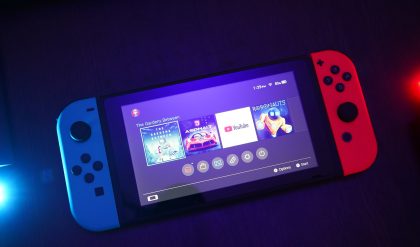
What is Wireless network interface controller? It is an IT device that acts as the bridge of sorts between a client computer and a wireless router. A wireless network interface controller (also called WIC) is used in many of today’s advanced routers and switches. A WIC is also known as a Wi-Fi access point or Wi-Fi AP. It is essentially a device that allows you to enter a secure area within your local area network (LAN).
A wireless network interface controller connects a client computer to a Wi-Fi or Bluetooth-enabled network, instead of a wired connection. In fact, most people don’t realize that you can have a wireless network interface controller instead of a wired one. This gives you a number of options when it comes to connecting various electronic devices to the internet. You can connect up your laptop to the web, tablet computers, smartphones, watches, cameras, and video game consoles to name a few. These devices all utilize high-speed wireless networks to connect to the World Wide Web at blazing fast speeds. If you want to stay connected, wherever you may be, there’s simply no substitute for a wireless network interface controller.
How does a wireless network interface controller work? The device has a permanent USB or parallel port that allows it to communicate with your computer. You can use the device with a USB or parallel port to connect it to your computer as either a WAN interface or an ACD (acoustic transceiver drive) interface. The latter is the most common form of a WIC and is capable of being used on either a switched or network adapter. A switched network adapter is used in place of your existing hardware network adapter.
There are many standard means by which a WIC operates. A basic WIC consists of a WLAN gateway, W NIC, and WIC cards. The entire device is relatively very similar to any other standard means of operating a computer except for the lack of standard Ethernet functionality. However, with the recent advancements in technology, most standard means of operating computers no longer require this peripheral. Most network interface controllers now only need to support WIC 2.4, which is considerably faster than the earlier standards.
A typical WIC acts as a miniature computer that sits between the physical layer and the packet layer of the networking hardware. The physical layer refers to the part of the hardware like the Ethernet card. The network card is the part of the computer that actually communicates with the network. The network card will communicate data packets and will be able to determine what the physical layer is. If the network card cannot determine which layer is which, then the network card will attempt to determine this via the OUI model.
If you have never seen an OUI before, then you have not had a chance to interact with a WIC before. The OUI is the name of the physical layer in the WIC. You can think of it in much the same way as how you think of the pci slot in your computer – the physical layer is the thing that plugs in and plugs out and the pci slot is what holds all of the necessary information together so that it can be plugged in and put away. In this case, the OUI model is what holds all of the necessary configuration and startup information that will help the computer to start up and perform properly. Therefore, a WIC is just like a pci card in that it has to communicate with the network and then perform various tasks that help it run properly.
The WIC works in conjunction with the NCIC or the network card encoders/decoders. The crc (cycle time Constant) is the number that tells the microprocessor how long it should spend getting data from the device and then sending it to the other end. If the timer expires, the WIC will try to get the data again until it gets to the target machine. At this point, the NCIC is called out and the process begins all over again. The problem that the WIC finds has to do with timing, so you need to be careful to follow the instructions very precisely and exactly as they are given to you so that you don’t get hit with a crc that you are not expecting.
As you probably have guessed by now, the WIC was developed to help computer network systems work more effectively by allowing various devices to communicate with each other without needing to use wires. Today, the NCIC still plays an important role in keeping computers network systems running smoothly, but the WIC has evolved so that it can now handle all of the signals for all the various devices that are on the network. In fact, many new models of laptops use wireless technology because the WIC makes sure that radio waves are transmitted from the laptop to the correct device. With today’s technology, the world of wireless networking looks a lot more complex than it did back in the days when all of this started out.







